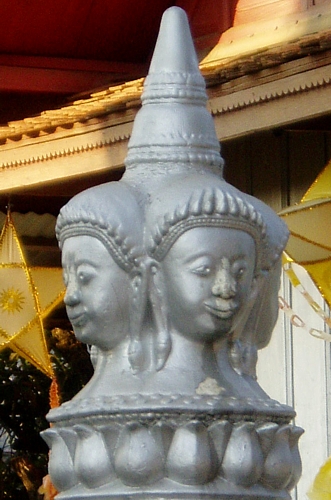Each of Pha Phom's seven daughters is dressed in a different colour, rides on a different animal holding a different object in each hand, & has her own jewel, favourite food & flower.
Sunday - the daughter named ທຸງສະ Thungsa (ทุงษะ):

She is dressed in red & rides a garuda, holding a discus in her right hand & a conch shell in her left. Her jewel is ruby, her flower is the pomegranate & her favourite food is a type of wild fig (Ficus glomerata).
Monday - the daughter named ໂຄຮາຄະ Khoraakha (โคราคะ):
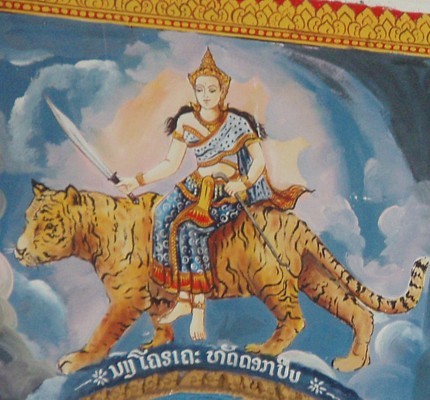
She rides a tiger, with a short sword in her right hand & a walking stick in her left. Her jewel is mother of pearl, her flower is Millingtonia hortensis (tree jasmine) & her favourite food is oil. Here & here she is shown dressed in steel blue, but she is often depicted as dressed in yellow.
Tuesday - the daughter named ຮາກສະ Raaksa (รากษส Raaksod):
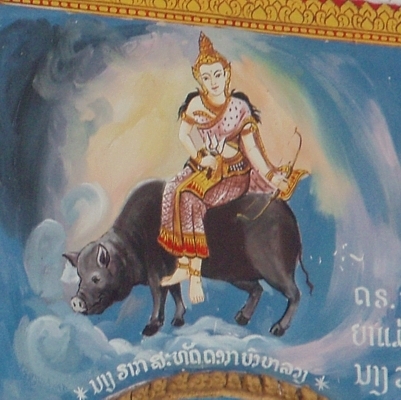
Her clothes are light pink & she rides a boar, with a trident in her right hand & a crossbow in her left. Her jewel is moonstone, her flower is the lotus & her favourite food is blood.
Wednesday - the daughter named ມົນທາ Montha (มณฑา):
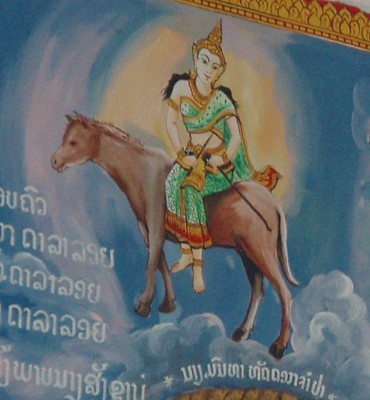
Her clothes are green & she rides a donkey, with a needle in her right hand & a staff in her left. Her jewel is cat's eye, her flower is the frangipani, & her favourite food is milk & butter.
Thursday - the daughter named ກິຮິນີ Kirinii (กิริณี):
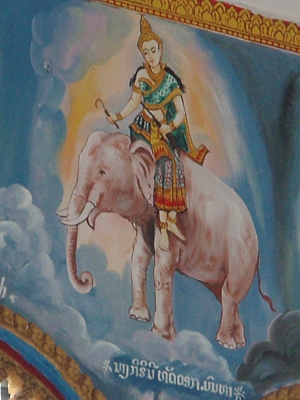
Her clothes are yellowish green & she rides an elephant, with a mahout's hook in her right hand & a gun in her left. Her jewel is emerald, her flower is the magnolia, & her favourite food is beans & sesame.
Friday - the daughter named ກິມິທາ Kimithaa (กิมิทา):

Her clothes are white & she rides a buffalo, with a short sword in her right hand & a lute in her left. Her jewel is yellow topaz, her flower is ดอกจงกลนี (a type of waterlily? anyone knows?), & her favourite food are bananas & water.
Saturday - the daughter named ມະໂຫທອນ Mahothon (มโหธร):
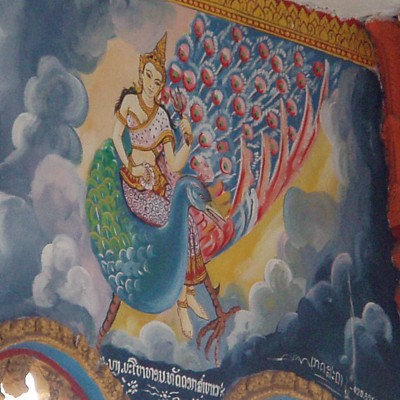
She rides a peacock, with a discus in her right hand & a trident in her left. Her jewel is black sapphire, her flower is the water hyacinth & her favourite food is venison. Here her clothes are light pink but she is often described as dressed in black.
The daughter assigned to carry her father's head that year will stand on the animal's back if the sun enters the sign of Aries in the morning, sit (afternoon), or recline with her eyes open (evening) or closed (after midnight). There are also various other predictions for the year pertaining to rainfall, harvests, politics & wars, disasters & epidemics, etc, based on the day of the week on which Songkran falls.

